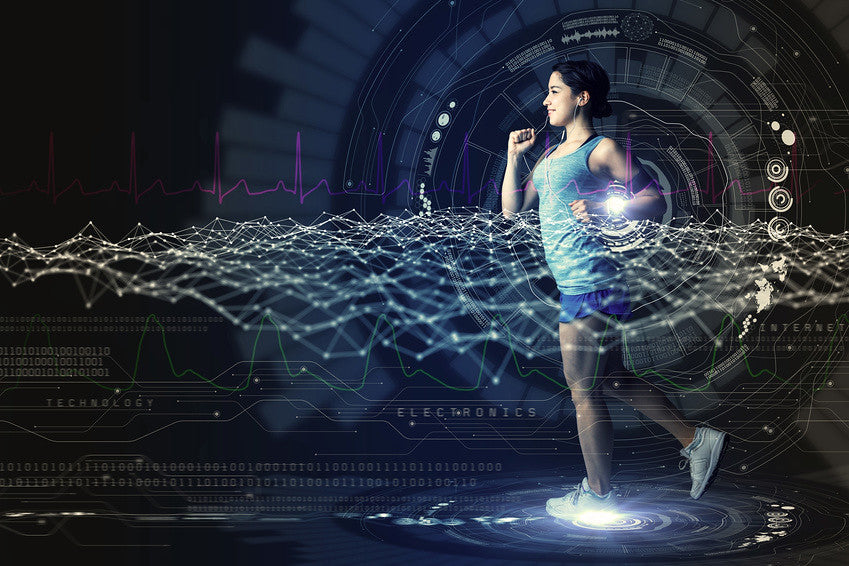Given our hectic lifestyles and the struggle to balance work, family and exercise we often times find the only time to exercise is before the sun rises and after the sun sets. As a business owner that trains for marathons, nighttime and early morning running is unavoidable. I have found that running in the dark has many obvious advantages and even more hidden benefits.
So, what is the science behind nighttime running?
- Performance
It feels like I can run faster at night. Why is that?
Researchers at the University of Essex have discovered that people who run, walk, hike or cycle at night feel as though they’re going faster and working harder (and thus reaping greater rewards) than when they exercise during the day. One theory is that the darkness makes it harder to gauge your speed according to the objects around you.
“When you run at night, you’re also less distracted and more tuned in to your body’s rhythm and timing,” says John Stanton, founder and CEO of the Running Room. “Come spring, when it’s marathon time, the runners who have been training in the dark are always delighted by how much faster their times are.”
- Temperature
Many runners might find that it easier than run in cooler temperatures, why is that?
John Brewer is a professor of applied sport science at St. Mary's University in London. A new study shows that a drop-in temperature is a good reason to run. In fact, researchers say, running in cold weather helps improve one’s performance.
That could be because lower temperatures reduce stress on the body. When you run in cold weather, your heart rate and the body’s dehydration levels are lower than in warmer conditions. The body needs less water on a cold day than in warm weather.
"We found, for example, that heart rates were about 6 percent higher in the hotter conditions. We found that the runners dehydrated by around 30 - 38 percent more in those hotter conditions. And they found it about 30 percent easier -- the test of their thermal regulation, how they felt, (and) their perception of heat -- was around a third lower when they were running in cold conditions."
The body does not have to work as hard to pump blood to the skin's surface. Brewer says that means running in cooler temperatures requires less energy. He adds that serious runners could cut valuable seconds off their personal best times by choosing to run in the winter.
- Vision
When you are immersed in darkness, why does it seem like you see better?
According to Dr. Ravi D. Goel with the American Academy of Ophthalmology, there are a few main differences between daytime vision and night vision. Firstly, the pupils become larger and the eye lets in more light when it’s dark outside. Secondly, a different, more sensitive kind of cell in the eye — rod cells — collects the light for night vision. In addition to this, the pupils, the black circles in the middle of your eyes, dilate in low light.
These changes to the eyes increase the visual acuity is the ability of the eye to see fine detail. The highest level of acuity is achieved at photopic levels and it decreases as the background luminance diminishes. In plain language, there is more contrast and an ability to focus on your activity.
I have been clipped by cars three times while running with many more near misses. All of those were in broad daylight! I find it safer to run at night with proper lighting because the drivers can see a runner or walker with lights because of the contrast as opposed to the lack of contrast and visual distractions of the daytime.
- Physiological
Why does night running feel better?
Scientists at the University of Chicago’s Clinical Research Centre conducted trial runs by wiring volunteers and recording physiological changes that took place during step machine exercises at all hours: morning, noon and night. Conclusions, that the body’s metabolism adapts better to evening and nighttime runs, surprised even the scientists recording responses.
Post-run blood samples taken from these volunteers offered more convincing arguments for running late in the day: elevated endocrine hormones like cortisol and thyrotropin, the harmful by-products of stress, aren’t nearly as high at night as they are during the day and the same goes for glucose levels, reports Dr. Orfeu Buxton, the man behind this study.
The Clinical Research Center at the University of Chicago has proven that late-in-the-day workouts are more intense than those in the morning because protein synthesis peaks in the evening at the same time your lungs are functioning at peak efficiency.
- Sleep
People often worry that exercising late at night will make it harder for them to fall asleep, but studies show the opposite is actually true. A recent study from the University of South Carolina found 97 percent of people who exercised at a high intensity at night discovered their quality of sleep was equal to or better than when they exercised during the day.
Another study, from the University of California, found that people who exercise at night are able to drift off to a deep, relaxing sleep a mere 30 minutes after their workout. “In many cases exercise actually improved their quality and ease of sleep,” says lead researcher Shawn Youngstedt.
The hike in your body temperature that comes with exercise may enhance sleep the same way taking a hot bath before bed does. “The area of the brain involved in lowering body temperature is also involved in promoting sleep,” says Youngstedt. “And running also has an anxiety-reducing, calming effect in general,” he says. It eases blood pressure and muscle tension, which leaves you feeling more relaxed.
So, the scientific conclusion is that there are numerous advantages to running, walking and hiking at night and early morning but preparation is the key to staying safe at night. Make sure you plan your route, and someone knows where you are going. Take your phone in case you get injured or lost or you need to contact to emergency services. Always wear light color clothing, reflective gear and lights so that you can be seen by vehicles.

